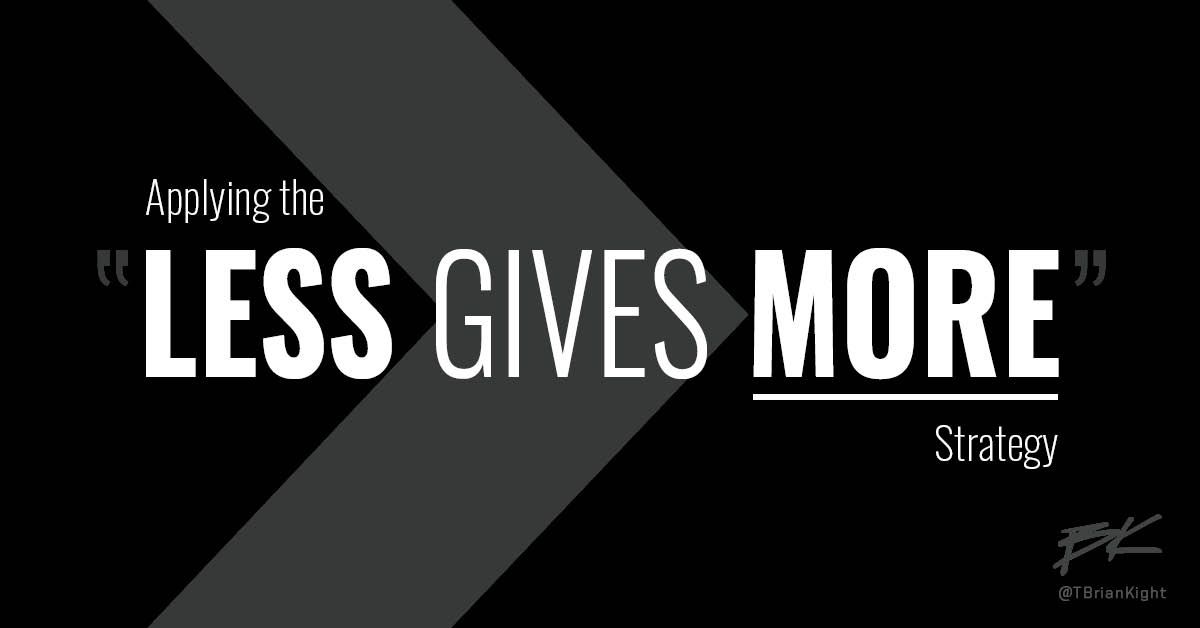Open In Case of Irritation
It’s not feeling irritation that’s a problem. Everyone gets irritated sometimes. Some get irritated...

Rather than trying to do more, maybe the better strategy is to do less, so you can do more of what matters. How often do you get so busy that important things get moved down the priority list? How often do mindless, trivial, or default things get your attention and chew up energy that could have been spent on something valuable? When you remove something distracting or disruptive from your life, you minimize the negative impact and you create space for something better to take its place. The next point is the most important dynamic to understand — you don’t need to know what better thing will take its place, you only need to begin the improvement process by removing the disruptive issue. I’ll demonstrate with something real.
When you remove something distracting or disruptive from your life, you minimize the negative impact and you create space for something better to take its place. The next point is the most important dynamic to understand — you don’t need to know what better thing will take its place, you only need to begin the improvement process by removing the disruptive issue. I’ll demonstrate with something real.
BCD (Blaming, Complaining, Defensiveness) is a great example of how less gives more. The quality of your life improves the less you do it. It literally doesn’t matter what you do instead. Removing BCD, regardless of what takes its place, is always the better option, even when you have no idea what to do instead. Less BCD means more good options. More BCD means less good options. Isn’t that clear at this point?
People who BCD less have more time, energy, and mental space to consider alternatives: patience, perspective, precision, perseverance, change, calm, understanding, reflection, honesty, empathy, reason, or dozens of other useful skills in daily life. People who BCD more have less time, energy, and mental space to consider alternatives. They have no room for more. Their mind is closed. They’re already full. An open mind simply leaves more space for other options.
There are things, like BCD, you can confidently remove from your life without experiencing negative consequences while at the same time putting yourself in position to gain something valuable. I think of this as “The Less Gives More Strategy”.
Here’s a quick list of five immediate things you can do less, without fear of what happens next, that will actually give you more. For each “less” on the list, I provide one example of what “more” could take its place. It could easily be something different for you, but I want you to understand how the strategy works, so you can apply it to yourself. I provide this list not to suggest it’s “right”, but only to trigger deep thinking for you. It can never be a one-size-fits-all prescription to follow. Use it if it works, adjust it if it doesn’t, and create your own list.
I’d love to see your list of how you apply the “Less Gives More” Strategy. Email me your examples or tag me on Twitter and Instagram (@TBrianKight) with the hashtag #LessGivesMore.
Do the work.

Brian Kight is a multi-industry leader on the topics of leadership, culture, and behavior. He provides simple systems that produce exceptional results for organizations, teams, and people.
-4.jpg)

It’s not feeling irritation that’s a problem. Everyone gets irritated sometimes. Some get irritated...

Hearing Jeff Bezos, Nick Saban, or Gary Vaynerchuk say the same thing you say doesn’t help you do...
Share your thoughts